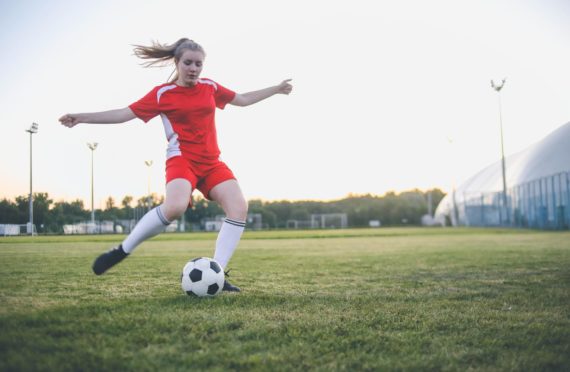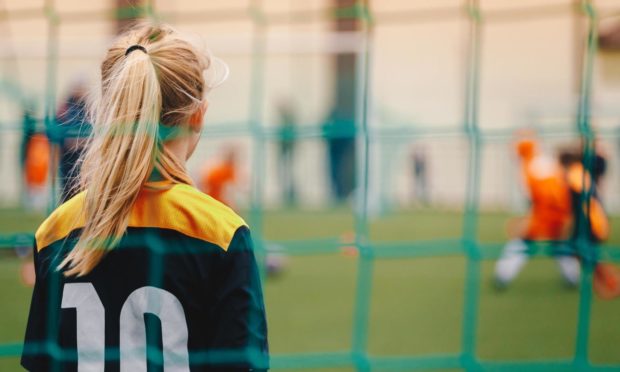New research has found that teenage girls who play football are at almost double the risk of concussion compared to teenage boys.
The findings have been welcomed by Dundee University Women’s Football Club coach, Gilbert Valentine, who had previously proposed the use of lighter-weight footballs to reduce head injuries in the game.
Gilbert says: “It is good to see interest in reducing head impacts where possible from either ball or head-to-head collisions.
“It’s a big issue in football. One of our female players used to have epileptic seizures and we noticed that on a couple of occasions she had a seizure after heading the ball, so that got us interested in the issue.”
The study by Professor Willie Stewart, Honorary Professor at the University of Glasgow in collaboration with researchers at the University of Pennsylvania and Michigan State University, found that teenage girls are less likely to be removed from play and take longer to recover from the injury than their male counterparts.
The research confirmed findings from previous research that overall, risk of sports-related concussion among female footballers was 1.88 times higher that of males.
Male footballers were most often injured colliding with another player and were 1.5 times more likely to be removed from play on the day of injury.
In comparison, women footballers were most often injured from contact with equipment, such as the ball or a goalpost.
Adolescent female footballers also took on average two days longer to recover from injury and return to play.
‘The girls are just as tough as the men’
In May 2018, Gilbert proposed trialling the use of 360g balls – as opposed to the standard 450g size – but the suggestion was not taken up by decision-makers.
Gilbert continues: “We use the 360g balls in training and if you’re crossing from corners, it’s actually a nicer ball to header.

“I used to do heading practice but we don’t bother with that now. I know the girls don’t like heading it.
“I have avoided making it a gender issue because then people think that the girls are soft, but it’s not about that. They’re just as tough as the men, and men have got the same problem with heading the ball. I’d like everybody to use the 360g ball for adults.
“There’s a movement against that, but then you look at all the people who are living with dementia which is becoming more of an issue, so I think it will change eventually.”
Links to dementia
Professor Stewart also led the FIELD (Football’s InfluencE on Lifelong health and Dementia risk) study, which in 2019 reported landmark findings that former professional footballers have an approximately three and a half times higher risk of death due to neurodegenerative disease than expected.
🗣 @robyyn9 and @dannimcginley contributed to three goals together yesterday and it was a perfect return from injury for the latter. pic.twitter.com/fhu2HXQjrP
— Dundee United WFC (@dundeeunitedWFC) December 7, 2020
“The main concerns arise from the action of heading the ball: doing so once or twice is unlikely to cause significant damage, but doing so over time could lead to trauma.”
Furthermore, in research conducted by the Drake Foundation, it was found that 66% of amateur footballers fear that heading the ball may be having a detrimental impact on their health; 70% want guidelines to restrict it in training; and 48% want less heading in matches.
